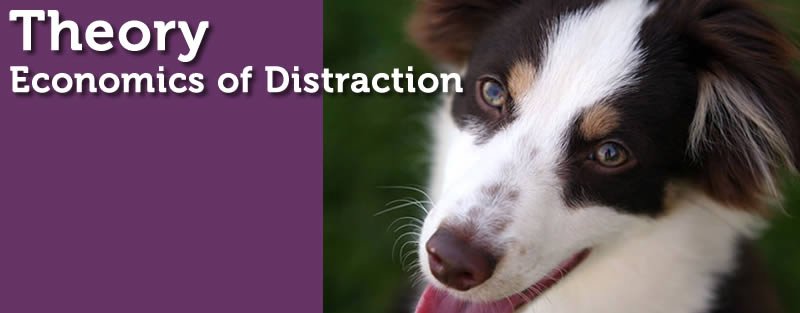
Economics of Distraction
Last Sunday we had a Disc Dog Drop In, like usual, and one of our good friends from Paws With A Cause, Becky, came over to work on sustaining drive with her dog Rhythm.
Rhythm is an awesome mini-Aussie, also known as The Weasel, due to his sharp nose and tendency to offer the ‘Aussie Smile’ at the drop of a hat – he really looks like a weasel. Oh yeah, not only does he look like a weasel, he POPS like one – he’s a huge leaper for his slight size.
Rhythm is an awesome athletic talent, and has had tons of time devoted to teaching him many skills and behaviors in many environments. Becky is also a good trainer, a former service dog trainer at Paws With A Cause.
Rhythm has a tendency to explode into the environment when he’s asked to work – marking everything, sniffing everything, hustling up on people, etc – essentially working everything but his handler and Frisbees. The environment is extremely stimulating for this little guy, and Becky has been going crazy trying to dial him in.
So she came out last weekend to try to get a plan together to fix this frustrating issue.
Sound Familiar?
When Becky let Rhythm out of his crate in the van, he started his shtick – running around peeing on stuff, jumping up and bouncing off of humans, sniffing trees, checking out the chickens – basically everything but hooking up with his handler for direction and interaction.
Becky has a pretty solid recall on Rhythm, which is a very nice thing, but it’s been hugely counterproductive for their jamming in new places, because when Rhythm dives head first into the environment, she recalls him, and he dives head first into the environment all the time.
This lack of access, or restricted access, to the environment increases it’s value.
The more Becky calls Rhythm to her and asks him to stay close to her, the more exciting and enticing the environment becomes.

In addition to increasing the value of the environment for Rhythm, recalling him all the time decreases her value. She winds up being a nag.
Becky is always there for her dogs. If she’s present, she’s available for them. They play ball, frisbee, do obedience, walk, run flyball, and a host of other things. The one constant in Rhythm’s life is that his mom is there and she’s ready to work with him.
So, when an exciting environment presents itself, Rhythm takes the opportunity to explore and engage it,”Mom will be there when I get back.”
The more Becky calls him off the environment to be with her, the more it proves that the environment is a gamble and mom’s a gimme.
Supply and Demand
If we take a look at this dynamic in terms of supply and demand, a concept that most of us are familiar with, we can see quite quickly that the same ole Becky can’t compete with the endless possibilities of the environment.
Access to Becky is guaranteed. She’s always there. She’s a given. She’s like steel – Steel is everywhere. It’s necessary and helpful, our lives depend on it, but it’s nothing special because it’s everywhere.
Access to the environment is restricted. It’s only there every once in a while. It’s never the same. It’s a gamble. The environment is like gold. Gold is rare. It’s not very necessary, and not very helpful, but it’s shiny and new and always slightly out of reach. That’s why gold is valuable.
So, as a resource, Becky is steel and the environment is gold.
If we want to make steel more valuable than gold, we need to make less steel and more gold. Flood the market with gold and the value decreases. Hold back steel production and the value increases.
Reducing the Value of the Environment
The first thing we want to do is to reduce the value of the environment, and we do that by flooding the market. All the sniffing you want. All the peeing you want. Go do it. Check it out.
This is hard, as we are just standing their with our discs in our hands waiting on the dog to pay attention to us. The immediate response is to call the dog to us to work, Becky tried a couple of times but we discouraged that.
As long as the dog doesn’t find something supremely exciting like a sausage factory, a pack of dogs, or a rabbit that needs to be chased, and as long as we don’t call the dog off, the shiny lustre of the environment tends to get a bit more dull.
“This is kind of boring, I wonder what my mom’s doing?”

As the dog looks to us to see what’s going on, that’s our chance. MarkShort for “Positive Marker”, a Mark is a word or signal given at the exact moment a desired behavior is performed. It’s like a clicker. Mark can also mean the act of marking... More the behavior and present a reward. If the dog comes, engage, if not, oh well, enjoy the environment. We go about our business.
If the dog likes what you have to offer, they’ll bite eventually and come and work with you.
With Becky and Rhythm, our first session was a bust. She could not get him to take the reinforcement, the disc, she had to offer. The environment was still too valuable. 10 minutes of standing there with our discs in our hands doing nothing. That’s fun!
We decided to put Rhythm back in his crate for a while.
Increasing the Value of the Handler
When we brought Rhythm out the second time, we made it impossible for him to reach his handler. We put him out in the pasture and closed the door. Leaving us on one side of the fence and he on the other. We hung out and talked for a bit.
Keep in mind that the pasture is filled with all kinds of wonderful smells, trees, pee-spots, furry animals, ducks, chickens – it’s a festival of dog fun out there, but because his access to his momma was restricted, heck it was cut off, he didn’t see the value in the festival of dog fun behind him. He stood there at the gate crying to be with his momma.
After a few minutes of this, we let him out. He did a bit of environmental cruising, but was a bit more keen to pay attention to Becky as he wasn’t sure if she’d available to him given the pasture thing that just happened.
Becky was able to mark a couple of looks at her and approaches to her, and get some rewards placed on those behaviors, increasing her value a bit, but it’s this next bit that really made her stock soar.
Becky offered him one roller as a reward following her positive marker. She marked the ‘catch’ and a tiny bit of praise… then immediately dismissed him to go play in the environment.
“Go do dog stuff!”, and then ignored him.
You should have seen the look on his face. It was priceless. “HUH!? But we were just playing! I’m not done!”
He brought the disc to her. We all ignored him.
He tried to put it in her hand. We ignored him.
Rhythm got a little frustrated and decided to take off to explore the environment, like usual.
But something happened. He stopped and looked back at Becky, “Can you believe she wouldn’t play with me?”
Becky marked the behavior and tossed out a roller. A startled Rhythm pounced on it.
He brought it back, dropped it at her feet ready for more. “Go do dog stuff!”
Again the look, again the weird walk off into the environment… stop, turn… yes! Roller The Roller is a great throw for reinforcing a dog with a disc. Instead of flying through the air like a wing, the Roller rolls on the ground like a wheel; a fast,... More!
The Roller is a great throw for reinforcing a dog with a disc. Instead of flying through the air like a wing, the Roller rolls on the ground like a wheel; a fast,... More!
This time when he returned, Becky called the out, marked it, rewarded with a roller, and we had him.
Taking it to the Bank
Rhythm started to jam.
Total focus on Becky, high on prey drive, and engaged in the task at hand, “This is how he plays at home,” she said as she wound up for another throw.
“Dismiss him,” I said, “Tell him to go do dog stuff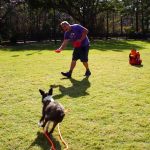 Go Do Dog Stuff... Dismissal means that the handler is off limits. It doesn’t mean the dog has to go, or that work is finished, or stop doing that behavior, it just means... More and ignore him for a sec…”
Go Do Dog Stuff... Dismissal means that the handler is off limits. It doesn’t mean the dog has to go, or that work is finished, or stop doing that behavior, it just means... More and ignore him for a sec…”
I think Becky was a little confused. Isn’t this what she came here for? To get her dog to play?
“We need to capitalize on this desire to play. We need to take it to the bank!”
Becky was going to keep playing with him, he was finally working. She was going to run him into the ground.
This is what most of us do (myself included) when working with a dog that is hard to engage in the game. We work hard to get them working and once we’re jamming, we work them into the dirt. Then what do they do?
They go back to checking out the environment. We get frustrated, the game ends on a sour note, and the dog doesn’t want to play anymore. That’s a problem.

What we need to do, and what we helped Becky to do, is to take that drive and desire to work, the heightened value on the handler and the game at hand and bank it. Take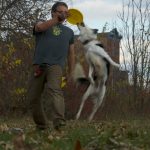 A Take is a cued Bite that replicates the placement and timing of a throw. Usually used with overs, vaults, and flips, the Take is a powerful teaching tool for creating habitual leaping... More it to the bank.
A Take is a cued Bite that replicates the placement and timing of a throw. Usually used with overs, vaults, and flips, the Take is a powerful teaching tool for creating habitual leaping... More it to the bank.
We quit while Rhythm was high, engaged and jamming. We quit before he did. We didn’t take that investment of time and effort and squandor it on one silly little jam session. We rolled the investment over and banked it in order to set up a lifetime of jamming.
Rinse and Repeat
All that Becky has to do now is repeat this in a few semi-distracting environments, and Rhythm will realize that jamming and playing with his mom is far more valuable than peeing on some bushes. Once that happens she can start to up the distraction level and he should be in good shape to jam just about anywhere.





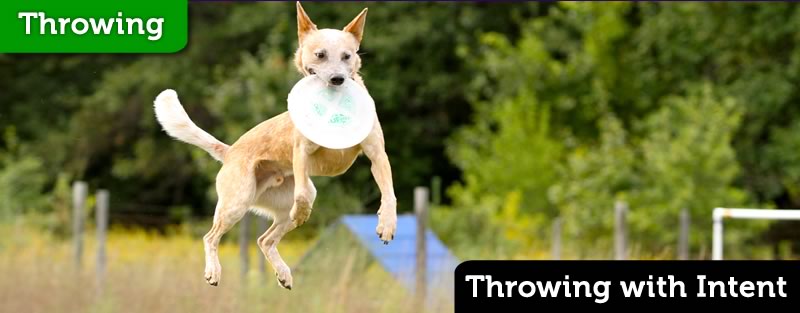

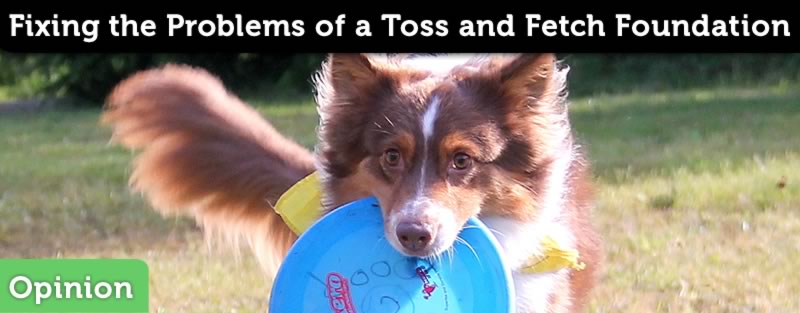

Responses